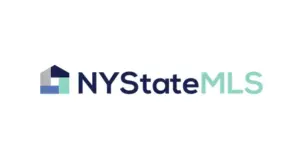Few questions carry as much weight during a property showing as: “Which school is this home zoned for?” Whether raised after glancing at a flyer in the window or mentioned during a walkthrough, the response can significantly influence a buyer’s perception and decision-making process.
Providing accurate school zoning information is important since a correct answer builds credibility and trust with clients, while incorrect or assumed data can lead to failed transactions, legal complications, and post-closing dissatisfaction. Real estate professionals cannot afford to rely on outdated records or informal sources—school assignment details must be verified and reliable from the outset.
School zoning affects far more than a family’s daily commute. It plays a defining role in property valuation, community character, and buyer search behavior. Agents who remain diligent and informed in this area enhance their value to clients, mitigate risk, and conduct business with greater confidence and professionalism.
What Makes School Zones So Important?
For families with kids, the school zone isn’t just another box on the wishlist—it can be the defining factor. But even buyers without children pay attention, often seeing school ratings as shorthand for neighborhood quality or stability.
In most cases, buyers zero in on districts for four big reasons:
- Education quality and peace of mind – Everyone wants safe schools staffed with strong teachers and consistently managed.
- Easier daily logistics – Closer schools mean shorter commutes, less rushing, and fewer schedule headaches.
- Resale strength – Homes tied to well-rated districts tend to appreciate more and hold value during market slowdowns.
- Neighborhood feel – District boundaries often shape local identity and influence how “tight-knit” a community feels.
One central real estate portal found that nearly half of the users with children filtered by the school district before looking at photos or specs. That’s how big of a role this plays. And if your listing has the wrong info? It can be a deal-breaker.
Where to Pull Accurate School Info
Not all sources are equal when it comes to school assignments. Agents use three main categories, each with strengths and blind spots.
1. District Tools and Boundary Maps
Most public school districts provide tools that allow you to punch in an address and get zoning results in seconds. Orange County Public Schools’ “Find My School” tool is a good example. These tools are your best bet for primary confirmation.
That said, don’t take the results at face value forever.
- Some sites only update annually.
- PDFs aren’t always accurate or legible.
- Boards often vote on changes in the spring; those tweaks may not appear until months later.
If your MLS pulls maps just once a year, the info might be out of date by summer.
2. Review and Rating Sites
Platforms like GreatSchools and Niche are incredibly popular with buyers. They gather data like test scores, surveys, funding metrics, and more to build detailed school profiles.
They’re helpful, but here’s the catch:
- Test scores often lag by months.
- A school’s rating might not reflect current leadership or programs.
- And most importantly, these sites don’t confirm zoning. They tell you how a school performs, not whether a house is assigned to it.
Always cross-check them with the district’s official tool.
3. MLS School Fields
MLS platforms typically have dropdowns or manual fields for school info. Some are auto-filled, and others require agents to input names by hand.
This is where problems creep in:
- Similar street names (e.g., Pine Ridge vs. Pine Ridge Ct.) get mixed up.
- Typos go unnoticed.
- Old listing data gets reused without checking.
Once a mistake enters the system, it spreads fast—across listing sites, search alerts, postcards.
How School Info Goes Sideways (and Costs You)
It doesn’t take much: a quiet zoning change or an overlooked suffix on a street name. An MLS typo that makes it into a dozen places. Before you know it, buyers think a home feeds into one school—only to find out too late that it doesn’t.
Common issues that mess things up include:
- Boundary shifts that fly under the radar – School boards might vote in April, but the new zones hit in August. And not everyone reads those mailers.
- Open enrollment misunderstandings – Just because a district allows transfers doesn’t mean every student will get in.
- Look-alike streets – MLS autofill loves a partial match. Pick the wrong suffix, and you might pull it into the wrong zone.
- Legal risk—If a buyer relies on your listing and ends up in the wrong district, they may have grounds for damages. This includes tuition costs, moving fees, and price differences.
One mistake in a listing field can trigger weeks of cleanup—or worse.
How to Stay on the Right Side of Fair Housing
The moment you start using terms like “good school,” “safe area,” or “great district,” you might be walking a legal tightrope. Under Fair Housing laws, this kind of language can be viewed as steering, especially if it hints at racial, income, or ethnic implications.
Here’s what to do instead:
- Keep it factual and neutral.
- Link directly to performance data, district programs, or curriculum info.
- Avoid words that suggest opinion or coded language.
Example of safe phrasing:
“According to the district site, this school has a dual-language program, a robotics team, and a 17:1 student-teacher ratio.”
What to skip:
“Everyone wants to live here—it’s mostly white, quiet, and has the best schools.”
Stick with facts. Let your clients decide what’s “good.”
How to Protect Yourself and Your Clients
Accuracy around schools doesn’t happen by chance—it takes a checklist and discipline. Here’s a straightforward system that can help:
Double-check the zoning every time.
Use the official district lookup tool. It is important not to guess and do not copy from old listings.
Save your sources.
Take a screenshot of your results or make a note of the contact person you spoke with at the district. Keep it in the listing file.
Use a disclaimer. Everywhere.
Always include something like:
“School attendance zones are subject to change. Buyers should confirm directly with the district.”
Add it to your MLS remarks, emails, and flyers.
Stick to verifiable details.
Instead of fluffing it up with “top-tier academics,” say:
“STEM wing added in 2023; robotics club meets twice weekly.”
Keep an eye out for changes.
Set a calendar reminder. Check for zoning updates mid-listing—especially in fast-changing areas.
Use These Tools to Make It Easier
You don’t need to do this all manually. Here are some tools that save time and reduce risk:
- RPR® School Reports – Great for pulling detailed school profiles and printouts for buyers.
- OCPS “Find My School” – One of the better examples of a district lookup tool.
- County GIS Layers – Most counties have shapefiles you can load into Google Earth to see district lines on a map.
- REMIND® – Let you draw a custom map and see which schools and tax records align with it.
- Google Alerts – Set alerts for the district name + “rezoning” so you’re never caught off guard.
Once the Listing’s Live—Don’t Go on Autopilot
Getting the listing right is step one. But if it sits for 30, 60, or 90 days? Things can shift. Here’s how to stay proactive:
- Watch school board meeting agendas. Look for zoning votes, new campuses, or capacity changes.
- Run a quick MLS sweep every couple of weeks. Search your active listings with school terms and double-check accuracy.
- Be a good neighbor to other agents. If you see something outdated in another listing, let them know. It helps everyone.
Agents work with districts in some markets to get certified on school policies and zoning boundaries. Having that kind of credential? It’s a trust booster with clients—and a smart move if you want to stand out.
School zoning may seem like a small detail, but the small stuff builds (or breaks) trust in this business. One missed street suffix or unchecked school name can undo weeks of work.
Get it right, double-check often, and always stick to the facts. Your buyers will thank you, your deals will stay solid, and your reputation will be rock solid.
Table of Contents






